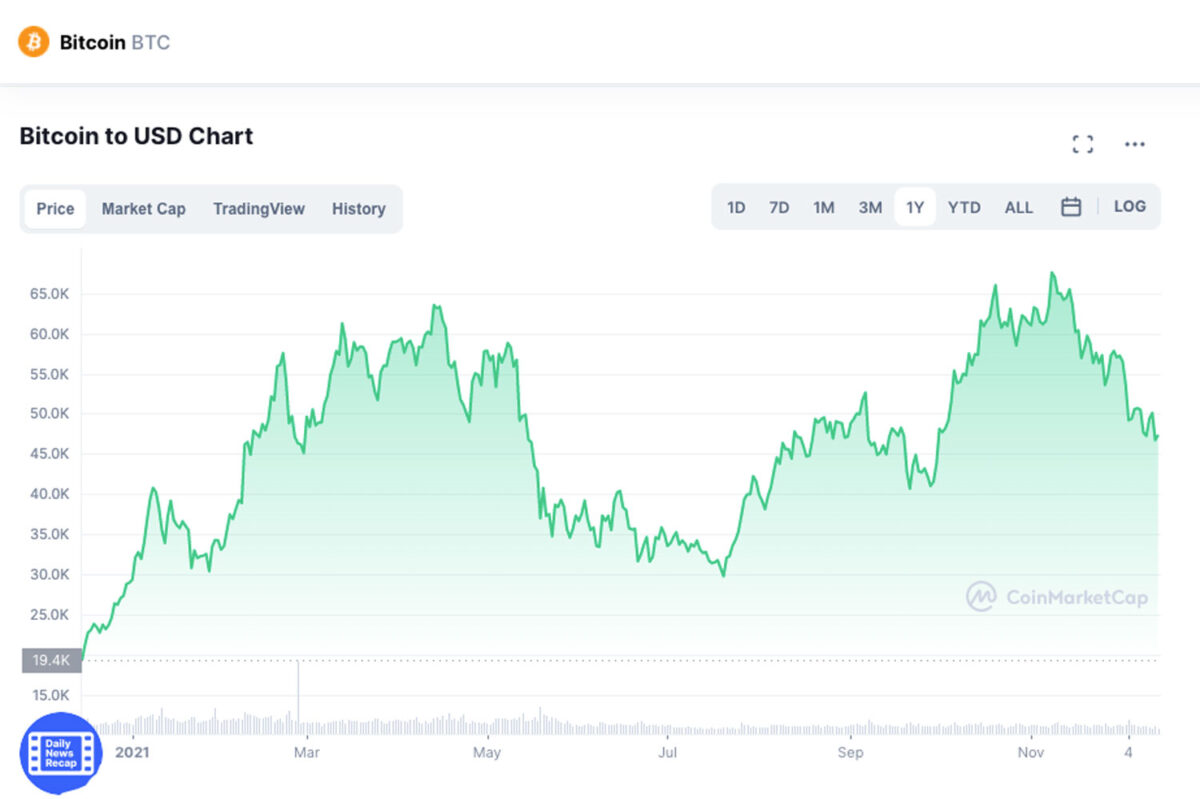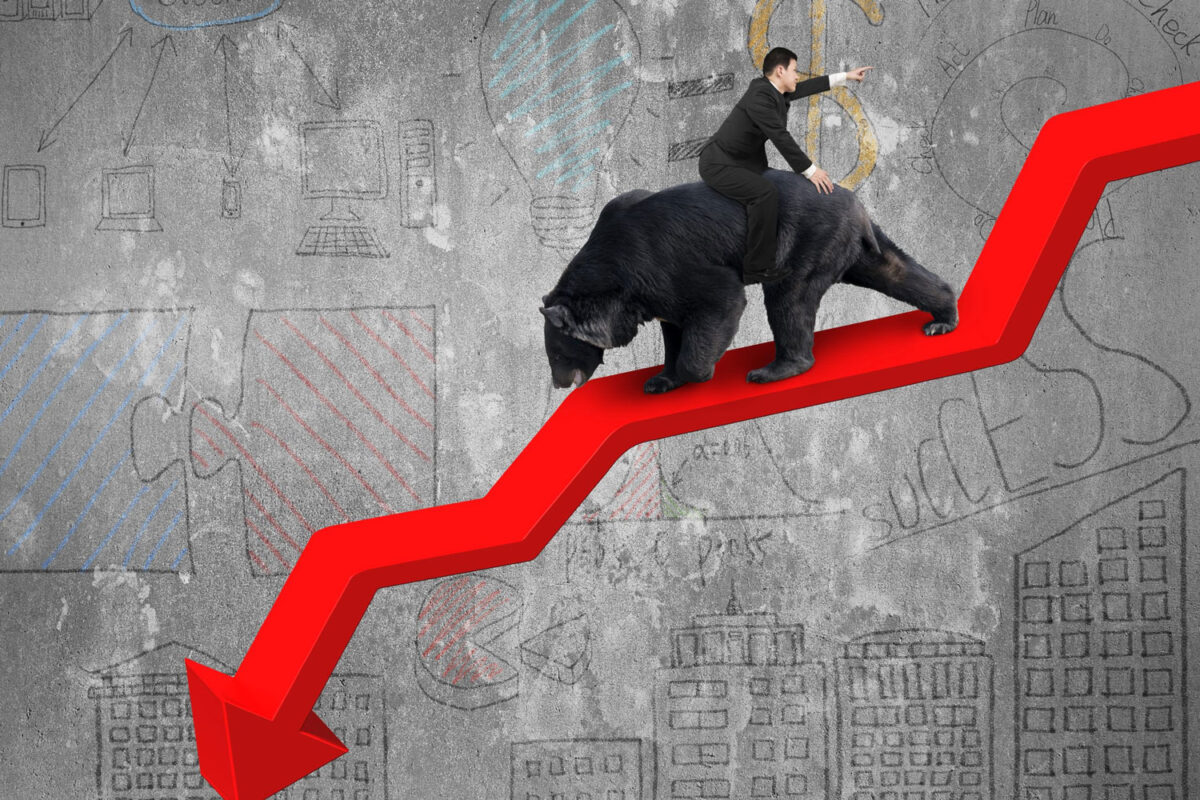Bitcoin (BTC) and Ethereum (ETH) are both on a major downward slide.
Bitcoin is down over 32.4% from its new all-time high on November 10 and is – at the time of writing – trading for US $46,756 (AU $65,828).
Ethereum has followed suit, although it hasn’t fallen as sharply as Bitcoin, it’s down 22.6% from its November 10 all-time high and is currently trading at US $4,878 (AU $6,868).
Despite the recent decline in value, both cryptocurrencies have still performed extremely well this year. Bitcoin is up 144.2% year-to-date, while Ethereum is up an impressive 539% from January the 1st.

Investors and analysts are concerned that if Bitcoin continues to fall below its 200-day moving average of US $46,720, then crypto may be entering a sustained bear market.
So, where are Bitcoin and Ethereum headed? Should investors follow the strategy of El Salvador’s president Nayeb Bukele and buy the dip? Or should they strap themselves in for a few more weeks of downward price action?
If there’s one thing that crypto investors are used to, it’s volatility. However, what many crypto pundits don’t realise is that the crypto markets, where Ethereum and Bitcoin remain the primary movers, are actually highly correlated with activity in the broader global market.
As the Fed scrambles to control inflation and the new Omicron variant slows economic recovery, investors in both crypto markets and global equities are proceeding with caution (though miners are still hammering away with their digital pick axes).
Watch how Bitcoin gets mined in the video below.
As reported by Yahoo Finance: the Chief Economist from Goldman Sachs, Jan Hatzius has said: “Omicron could exacerbate goods supply shortages if virus spread in other countries necessitates tight restrictions.”
“This was a major problem during the Delta wave, but increases in vaccination rates in foreign trade partners since then should limit the scope for severe supply disruptions… omicron could also delay the timeline for some people feeling comfortable returning to work and cause worker shortages to linger somewhat longer.”
The other major factor driving down prices is the new Jerome Powell-led Federal Reserve, which is starting to take a different approach to fiscal policy, focusing on controlling inflation rather than providing support to assets.
Consequently, the Bank of America’s chief investment strategist Michael Harnett has sounded a bearish warning call.
He warned: “The 2021-22 investment backdrop is similar to early stagflation of late-60s, early-70s period of inflation & interest rates breaking higher on back of high budget deficits. The winners were real assets, real estate, commodities, volatility, cash, emerging markets, all of which held their own versus inflation.”
“The losers were bonds, credit, equities, tech, all of which ultimately struggled. We think we’re currently in the 69-71 period.”
Harnett is bearish for 2022, expecting a “rate shock” to slow down financial growth and keep markets on a gradual decline.
Despite this, many prominent investors believe that crypto assets, particularly Bitcoin, are actually safe-havens against broader market downturns and will eventually prove to be a long-term hedge against inflation.
So, is Bitcoin really a safe place to store cash for the long term?
RELATED: Bitcoin Flash Crash: Is Now A Good Time To Buy?
Nigel Green, CEO of Devere Group who had previously forecasted that bitcoin could hit $100,000 by year end, says that he isn’t concerned by crypto’s short-term price action and is adding even more Bitcoin and Ethereum to his portfolio.
Per Yahoo Finance, Green said: “I’m confident that digital currencies are the inevitable future of money… in our increasingly tech-driven, globalised world, it makes sense to hold digital, borderless, decentralised currencies. In addition, adoption and demand are increasing all the time, whilst at the same time, supply is decreasing.”
Marc Chandler, the chief market strategist at Bannockburn Global Forex has other ideas. According to Bloomberg, he said:
“The idea that as it matured, the volatility would ease has not really materialized… the volatility is deadly and its other supposed attributes, like a hedge against inflation, seems spurious.”
Ultimately, crypto markets will continue to be volatile, and the broader sentiment among crypto bulls hasn’t changed. If you’re a firm believer in crypto and you invest with a long-term price target in mind, buying the recent dip may prove to be a profitable investment strategy.
Disclaimer: This article is intended for informational purposes only. This is not financial advice. Never invest more money than you can afford to lose into any crypto.
Read Next
